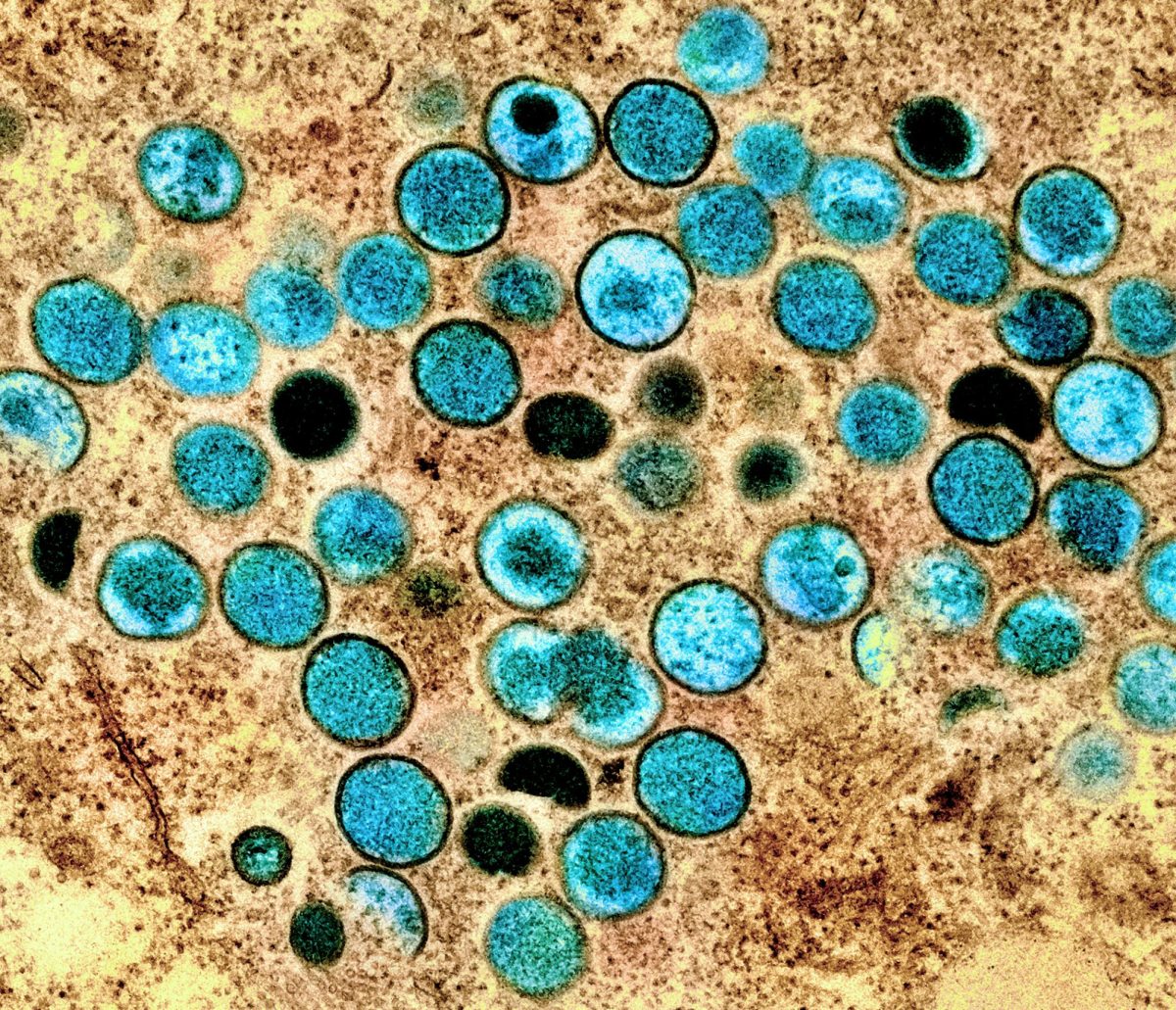*The opinions expressed within the content are solely the author’s and do not reflect the website’s or its affiliates’ opinions and beliefs.”
Mpox, formerly called Monkeypox, is a viral disease caused by the Monkeypox virus. Although this virus is very similar to the virus that causes smallpox, the body reacts differently to Mpox. Some common symptoms of Mpox are skin rashes and mucosal lesions, often accompanied by fever, headache, muscle aches and overall low energy. The disease primarily spreads through close contact with a person with Mpox, direct contact with a contaminated object and direct contact with infected animals. There are many ways that you can protect yourself from contracting the disease. The most common option is to get vaccinated; other options include isolation at home, avoiding close contact with other people and avoiding contact with live or dead animals.
Mpox has two main clades, or groups of organisms with a common ancestor. Clade I essentially causes cases where the disease originates in Central and Eastern Africa. Clade I is considered more dangerous and deadly than its counterpart, clade II. The spread of lade II instigated the World Health Organization to declare a public health emergency about Mpox in 2022. However, more recent studies indicate that clade I has begun to circulate in Africa, including those that have never seen Mpox in the past. Additionally, as of Sept. 3, 2024, cases have been reported in European and Asian countries after traveling to Africa, resulting in the WHO declaring the spread of Mpox clade I as a public health emergency. Although certain countries should see Mpox as an imposing threat, it is not currently something Americans should worry about.
In the status quo, there are no reported cases of Mpox, clade I or clade II, in the United States. Therefore, the chance of the disease spreading domestically is extremely low; however, there is a chance that people can carry the disease when they travel internationally. While that concern is valid, the Biden-Harris administration has worked hard since Mpox clade II was declared a public health emergency to rapidly detect the disease and help the potentially contaminated people. For example, the United States is working to improve its detection capabilities by wastewater testing. Wastewater testing involves obtaining water samples from the sewage from communities nationwide. Since parts of the virus are often shed when people use the bathroom or wash their hands, scientists test for the virus in the wastewater. Using the data collected through the testing, public health officials can better understand disease trends in specific communities and provide more helpful guidance to individuals. The CDC is also working to help keep the American public informed about Mpox. This information includes common symptoms, precautions and treatment of Mpox. Also included is a travel notice, which the CDC encourages people not to travel to countries near the Democratic Republic of Congo, where most Mpox cases have been reported.
Along with the lack of cases of Mpox, a vaccine for Mpox is also in distribution. When the disease was confirmed as a public health emergency, people were worried about the emergence of another disease similar to COVID-19. However, this disease will not be as much of a threat because of a vaccine. With the COVID-19 pandemic, countries worldwide were scrambling to limit the spread of the disease while also working to create a vaccine. Unlike COVID-19, the Jynneos vaccine has already been created and tested on clade II of the Mpox disease. Over one million vaccine vials have been distributed across the United States to help shield the country if the disease spreads across the Atlantic. While the vaccine will not prevent the disease from occurring entirely, it can help limit the number of cases and prevent the world from going through another instance of the COVID-19 pandemic.
Lastly, the spread of Mpox in the United States is not a significant concern. When comparing COVID-19 and Mpox, the main difference is that COVID-19 is airborne, hence the millions of cases. Mpox, on the other hand, is only transmitted through physical contact. This means that the average person has almost no chance of contracting the disease unless they have close, intimate contact with other people. People who come in contact with objects such as clothing, bedding, towels or electronics are often at higher risk since the disease can be transmitted through objects. In general, the limited groups of people at risk and Mpox’s less contagious nature make widespread transmission of the disease extremely unlikely.
Even though there are many precautions, the apparent lack of vaccines seems to be an essential issue when identifying if Mpox should be considered a worry. This lack of vaccines brings up two main issues. Speaking within the United States, a lack of vaccinated people means the disease has a higher chance of spreading quickly, potentially blowing out of proportion. From a global perspective, a lack of vaccines means that countries where the disease spreads quickly cannot help their people. As a result, eradicating the commonality of Mpox seems like an impossible task. Additionally, with the disease beginning to spread to countries outside of Africa, individuals who travel to these countries are now at risk for contracting Mpox. Since a travel advisory for all the countries on the eastern side of the world is impractical and will likely not be followed, this lack of vaccines on a global scale may result in a rapid increase of cases across the globe.
Although the lack of vaccines is a fair concern, it is also unnecessary. Since the disease is spread through more intimate contact, the chances of people simply traveling to an at-risk country and contracting Mpox are slim to none. Therefore, due to the lack of reported cases in the US, the presence of a vaccine, and the unique form of contraction, the Mpox virus should not be a concern for Americans.










